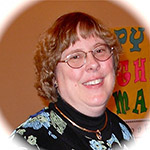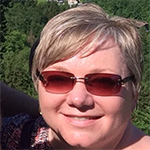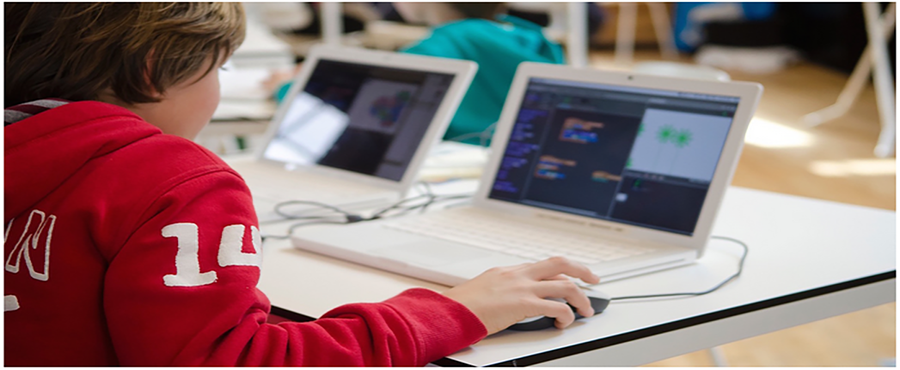Posted on August 31, 2015
Posted by Jan Snyder and Jennifer Maurer
As librarians, we feel privileged to have a very rich collection of Gale databases and eBooks at our fingertips to use with students and staff, at zero cost to us, through the Oregon State Library’s Statewide Database Licensing Program. This allows for statewide access to a wide range of vetted information, on unlimited topics, for use by our patrons. These same databases are available at K-16 throughout Oregon, as well as at public libraries, for use by all state residents. In talking with librarian friends across the country, we know that we enjoy a benefit not available in many states.
Funding for the statewide databases comes from a Library Services and Technology Act (LSTA) grant. Another grant project was initiated some 15 years ago, when members of the Oregon Association of School Libraries (OASL) and Oregon State Library staff shared concerns about access to information literacy resources for students and teachers, as the number of licensed school librarians employed across the state declined. OASL applied for a LSTA grant from the State Library to create OSLIS, or the Oregon School Library Information System, and that has become a continuing statewide project. In addition to offering information literacy resources and citation generators in MLA and APA formats, OSLIS serves as the K-12 access point for the statewide databases.
Having statewide central access to the databases provides consistency for students as they move from elementary to middle school and then high school. It also means that students and educators served by school library staff who are not familiar with how to link directly to databases still have access to statewide resources.
The real value and power of these resources are unleashed when we, as librarians and educators, perform two vital actions: collaborate and communicate. In this two-part blog, we’d like to share exactly what we mean – from our own perspectives – starting with collaboration
(Watch for Part II — Driving Electronic Content Discovery and Usage: Communication in the coming weeks.)
Collaboration
Jan
Local Level – Digital Curriculum:
Even more than for research, one of the most rewarding and exciting ways we use the Gale databases and eBooks is in the creation of digital curriculum. The ability to meet classroom instructional and curricular needs is critical. Information changes continually, and learning standards change regularly. For example, Oregon City now focuses more heavily on digital curriculum in lieu of costly static textbooks. (While we are not a 1:1 district with students and computers, teachers use a projector and laptop in the classroom, with a handful of movable carts of computers at each building.)
Libraries must remain integral to the schools they serve. They are not just the living room of the house called a school, but the heart of all that happens with instruction. Database and eBook resources are used by staff and students to explain concepts, extend learning and understanding, and provide research resources. Digital curriculum is very accessible and flexible regardless of location or device. Digital resources have been vetted at the highest standards. Those resources, combined with other district-purchased databases, provide the content to create the digital classes for teacher and student use. This easily updatable digital curriculum format allows “one-stop shopping” for staff and students for content. Classes in Oregon City are created through the Gale CLiC (Classrooms in Context) platform. (Other platforms would function well, too.)
The scope and sequence of units are listed in the left column of the page with each topic having links to specific content including articles at various reading levels, video clips, podcasts, charts, graphs, images, etc. This content is aligned with current state standards and incorporates the Common Core State Standards. We are currently working on Next Generation Science Standards and creating content to match the targeted student learning goals at each grade level.
The ability to scaffold information for classrooms needing a variety of reading levels, and different learning styles, is extremely helpful to both the students and teachers. As a “living, breathing” curriculum, content can easily be updated as information becomes available. In addition to Gale articles, we add video clips from Learn360, our video streaming database, articles from our World Book electronic encyclopedia, and, where appropriate, information from other databases, such as CultureGrams and Issues and Controversies in US History. Without the databases provided by the State Library, we would not have the funds available to purchase these additional products, which nicely round out our curriculum resources. This makes curriculum development very reasonable to districts and schools.
Jennifer
State Level – Gale Bookmarks in Graphic Organizers:
As the School Library Consultant at the Oregon State Library, I work closely with the OSLIS content team, an OASL committee, and I field questions and provide trainings about OSLIS. Besides offering trainings in school districts, we offer sessions at the annual OASL fall conference (both on OSLIS in general and specific Gale database sessions), and at non-library events such as a regional conference of the National Council of Teachers of English. As a result of building relationships with key staff at the Oregon Department of Education (ODE), I have been invited to present at some of their conferences, too.
A large part of my OSLIS training focuses on making sure library staff and teachers know about the Gale databases and how to access and use them. When I first started in this position, I concentrated on how the databases support research projects. Over time, I started emphasizing how database content supports day-to-day instruction. For example, because Common Core stresses close reading of informational text, I demonstrate how teachers can identify an article within Gale and add a bookmark link to it on an assignment sheet.
The New York Times blog, The Learning Network, offers some close reading graphic organizers. I converted the one called Double-Entry Chart for Close Reading from a PDF to a Google document so I could add a Gale bookmark; I made sure not to change anything else and to leave the credit information at the bottom. With the presidential race gearing up, I chose an article from The Atlantic called “Abraham Lincoln is an Idiot: The Difficulty of Recognizing Excellence in Its Own Time” (Gale document number A336489177) to demonstrate how high school social studies teachers could discuss current events in a historical context while also incorporating reading instruction. Check out the converted worksheet. The possibilities for this type of activity are limitless.
[alert-info]
 About the Author
About the Author
Jan Snyder has been a librarian for more than 40 years. As district librarian of her school district over the last 25 years, she has seen many changes–most of them exciting. She has a passion for curriculum development. When not creating digital curriculum content for teachers and students or facilitating her many libraries, she loves taking pictures, reading her Nook, and working with wool appliqué.
[/alert-info]
[alert-info]
 About the Author
About the Author
Jennifer Maurer is the School Library Consultant at the Oregon State Library–not to be confused with the libraries at Oregon State University–where her primary responsibilities include working with OSLIS and the K-12 aspect of the statewide databases. Previously, Jen drove a bookmobile and was a teacher and a school librarian for a dozen years, split between Texas and Oregon. In her free time, she enjoys geocaching and traveling. This summer she was able to combine those interests by finding a geocache in Moscow’s Red Square.
[/alert-info]

